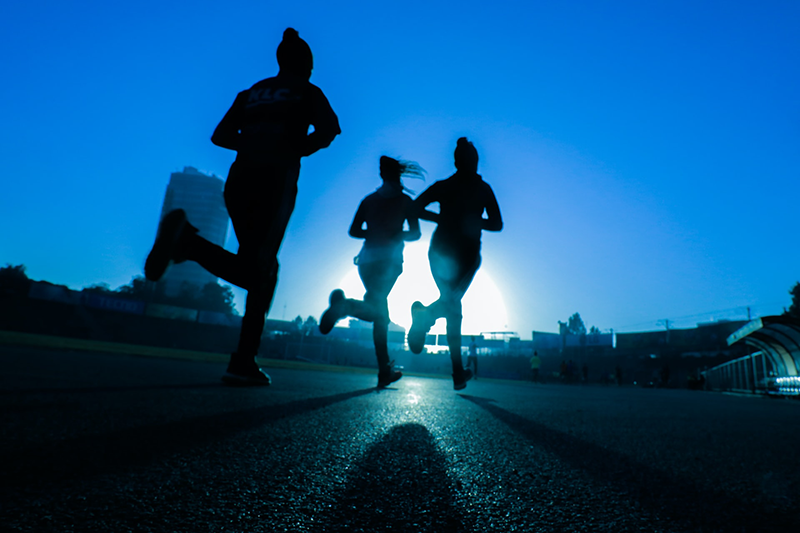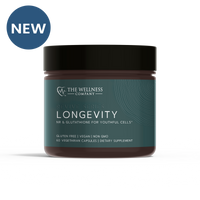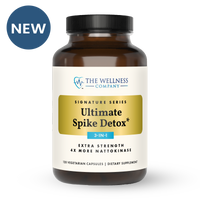Exercise Boosts Immunity, Reduces Death from COVID-19, Studies Find

America is currently experiencing what some have called a "triple-demic" - several contagious illnesses concurrently circulating in the population. The contagions in question are influenza, respiratory syncytial virus (RSV), and COVID-19 variants. The question many people are asking in light of all this is what they can do to protect themselves and their loved ones.
When addressing how to reduce the spread of these illnesses and improve our outcomes when we contract them, the mainstream media repeatedly sings the same tune: get boosted, wear masks, wash your hands, and avoid crowded spaces. Addressing each of those factors is outside the scope of this article. It will suffice to say that except for hand-washing, each one of the standard “protection” responses has given rise to debate and developed considerable baggage. It is not unfair to observe that for many, that standard mantra has become inextricably linked with fear, isolation and inactivity.
Unfortunately, very little is said in mainstream sources about what we, as autonomous individuals, can do to courageously take control of our health and enhance our immunity from a lifestyle perspective. The important question as far as we’re concerned is what you can do today to take your wellness into your own hands and boost your immunity naturally.
Robust research suggests that exercise, sleep, stress and nutrition – factors that were all but ignored by the mainstream media and public health authorities during the COVID-19 pandemic – matter a great deal when it comes to immunity. This article will zoom in on one of the factors mentioned above, which a recent study suggests has major impacts on recovery outcomes from COVID-19 specifically. That factor is exercise.
Landmark Study Shows Exercise Reduces Risk of COVID-19 Death
On December 14, 2022, the American Journal of Preventative Medicine published a cohort study of almost half a million people, which demonstrated that those people who exercised at least 30 minutes per day (for the two years preceding their COVID-19 diagnosis) were four times less likely to die of COVID-19 than those who were inactive in the years leading up to their diagnosis [1].
In the words of the researchers:
“Those who were consistently inactive were 191% more likely to be hospitalized and 391% more likely to die than those who were consistently active.”
It’s important to note that the researchers carefully controlled for other variables which could have influenced the outcome, such as age, sex, race, ethnicity, BMI, smoking status, blood sugar levels, other comorbidities, and vaccination status before contracting COVID-19.
Protection Not Unique to COVID-19
These impressive results are not unique to one study [2], and the protection exercise exerts against infectious disease is not unique to COVID-19. In a systematic review and meta-analysis published in 2021, scientists found that engaging in a high level of habitual physical activity was associated with a 31% risk reduction of all community-acquired disease, and a 37% risk-reduction in mortality from those diseases [3].
Exercise Immunology Mechanisms
The aforementioned study is notable because it didn’t just look at disease outcomes but delved deeper, asking how exercise induced such remarkable results. Their analysis showed that regular performance of moderate to vigorous physical activity led to increased strength of the mucosal immune barrier, as well as a higher concentration of CD4 cells, which are key in orchestrating the immune response when infections do occur.
We’ve known since well before COVID-19 – thanks to a growing body of evidence in a new field called exercise immunology – that exercise enhances immunity. Research from the past two decades suggests that moderate and vigorous intensity bouts of exercise less than 60 minutes augment a process called immunosurveillance, which refers to the process by which the immune system searches for foreign pathogens, such as bacteria and viruses, or pre-cancerous and cancerous cells in the body [4].
Immunosurveillance seems to also involve an increase in circulating immune cells, such as neutrophils, natural killer cells, cytotoxic T cells, and immature B cells.
If you’re curious to learn more about the detailed mechanisms, we encourage you to read the paper by Nieman and Wentz, from 2019 (reference 3 below).
How Much Exercise Do You Need?
The landmark study described earlier showed that it only took 30 minutes of exercise such as brisk walking per day to see a huge benefit in disease morbidity. In other words, you don’t need to become an elite athlete to get the benefits of exercise. It’s worth noting that according to one of the studies mentioned above [2], the protective effects of exercise began to level off at a threshold of 150 minutes of moderate-intensity activity or 75 minutes of vigorous-intensity activity per week. For the purposes of protection against COVID-19, it doesn’t appear to be necessary to do much more than that.
If you don’t exercise at all, now is a great time to start. If you are struggling to get moving, check out some of the suggested reading below for motivation and guidance.
Suggested Reading:
How to Move More in a World That Has Never Moved Less
The Hidden Benefits of Endurance Training
Video: An animated summary of the study by Ezzatyar et al. (2022)
References
[1] Young, D. R., Sallis, J. F., Baecker, A., Cohen, D. A., Nau, C. L., Smith, G. N., & Sallis, R. E. (2022). Associations of Physical Inactivity and COVID-19 Outcomes Among Subgroups. American Journal of Preventive Medicine.
[2] Ezzatvar Y, Ramírez-Vélez R, Izquierdo M, Garcia-Hermoso A. Physical activity and risk of infection, severity and mortality of COVID-19: a systematic review and non-linear dose-response meta-analysis of data from 1 853 610 adults. Br J Sports Med. 2022 Aug 22:bjsports-2022-105733. doi: 10.1136/bjsports-2022-105733. Epub ahead of print. PMID: 35995587.
[3] Chastin, S. F., Abaraogu, U., Bourgois, J. G., Dall, P. M., Darnborough, J., Duncan, E., ... & Hamer, M. (2021). Effects of regular physical activity on the immune system, vaccination and risk of community-acquired infectious disease in the general population: systematic review and meta-analysis. Sports Medicine, 51(8), 1673-1686.
[4] Nieman, D. C., & Wentz, L. M. (2019). The compelling link between physical activity and the body's defense system. Journal of sport and health science, 8(3), 201-217.














